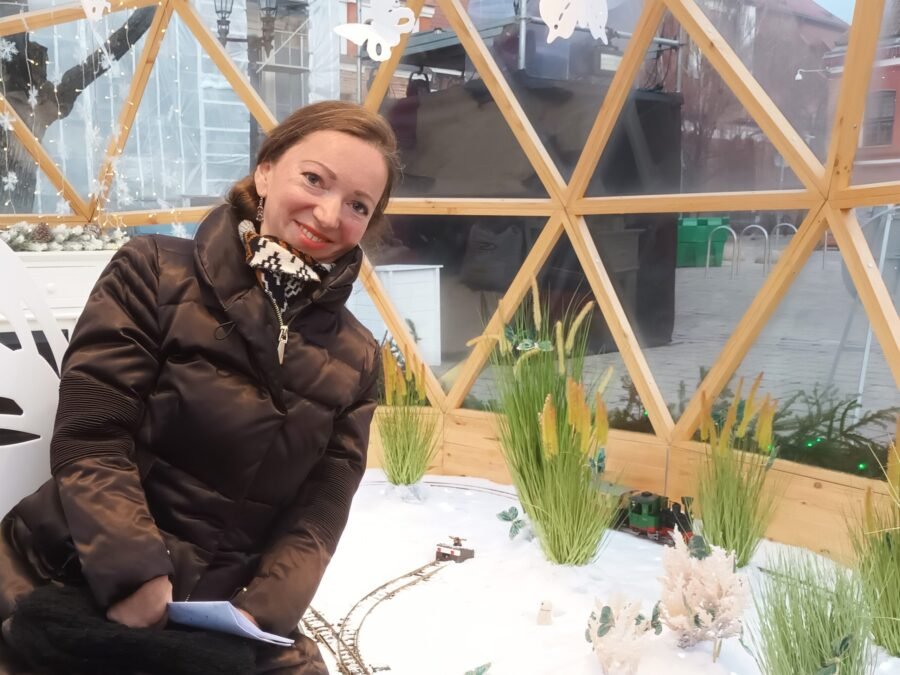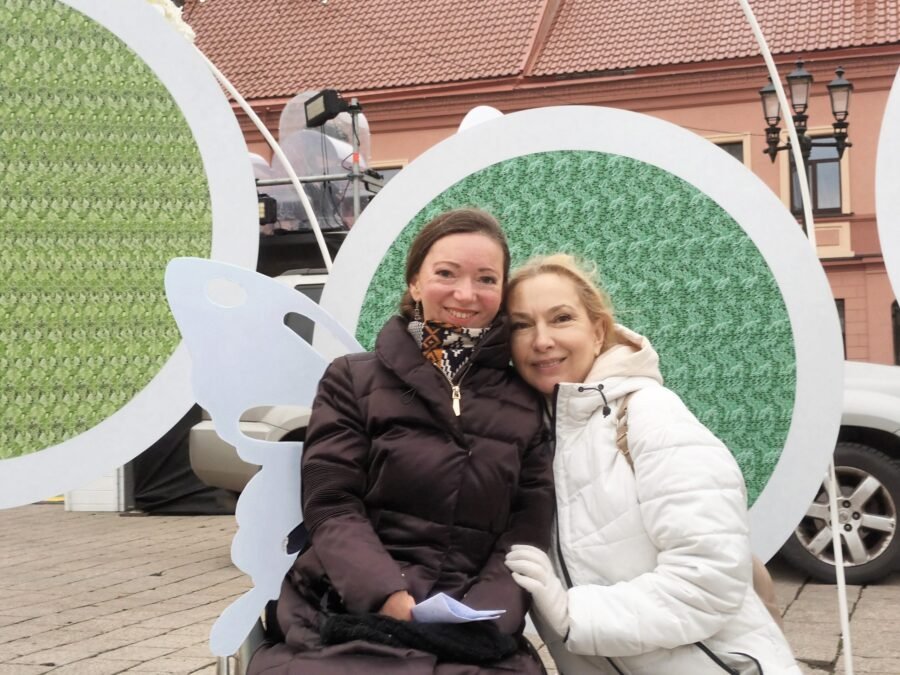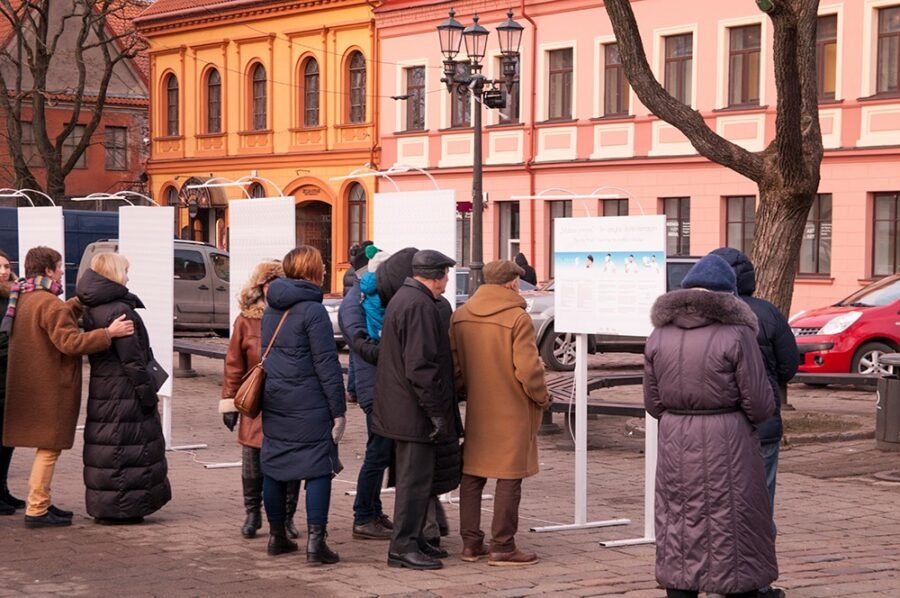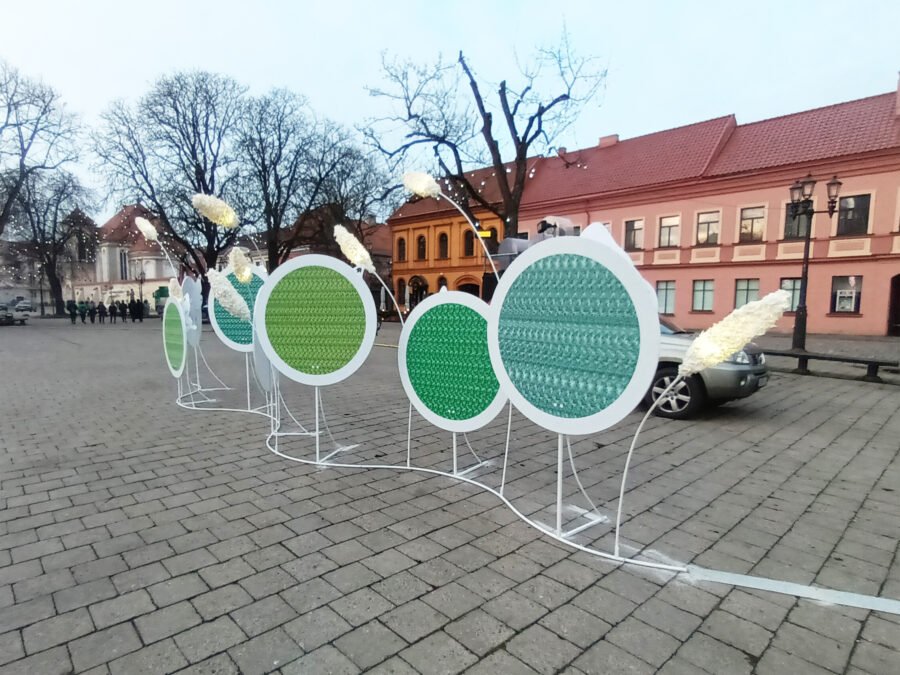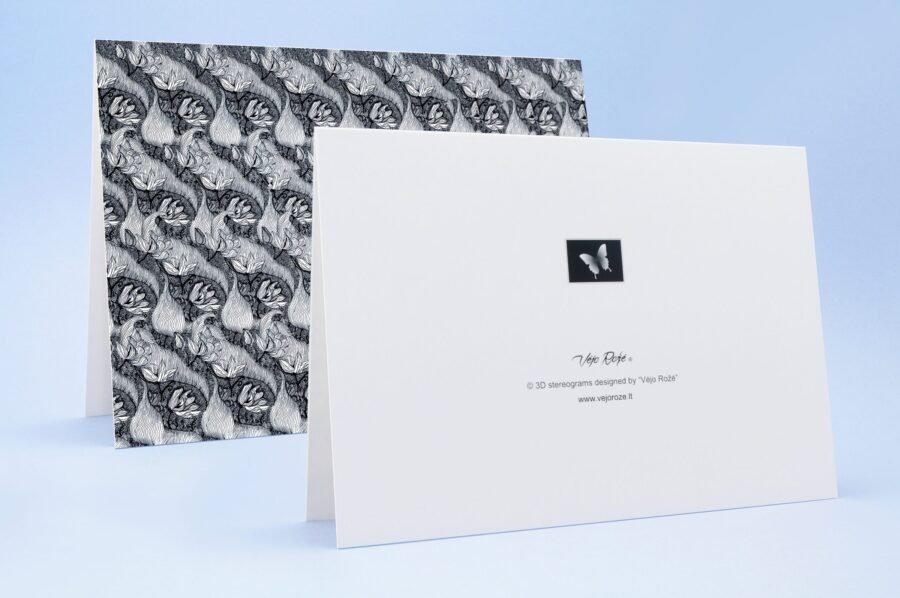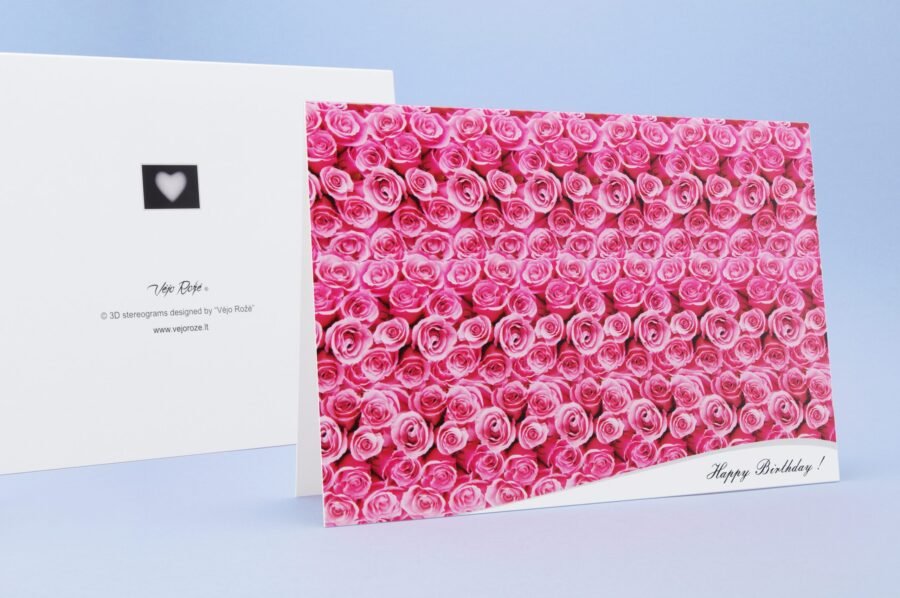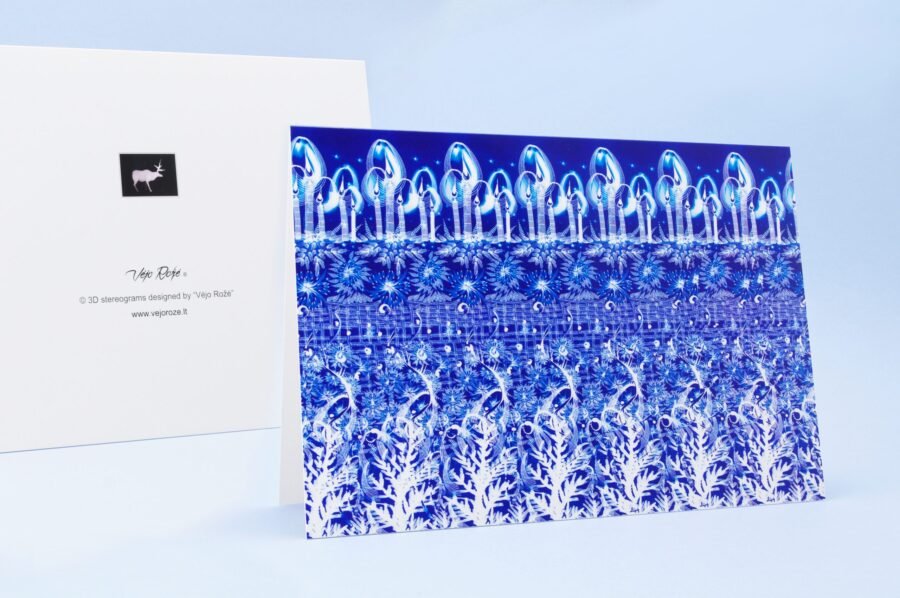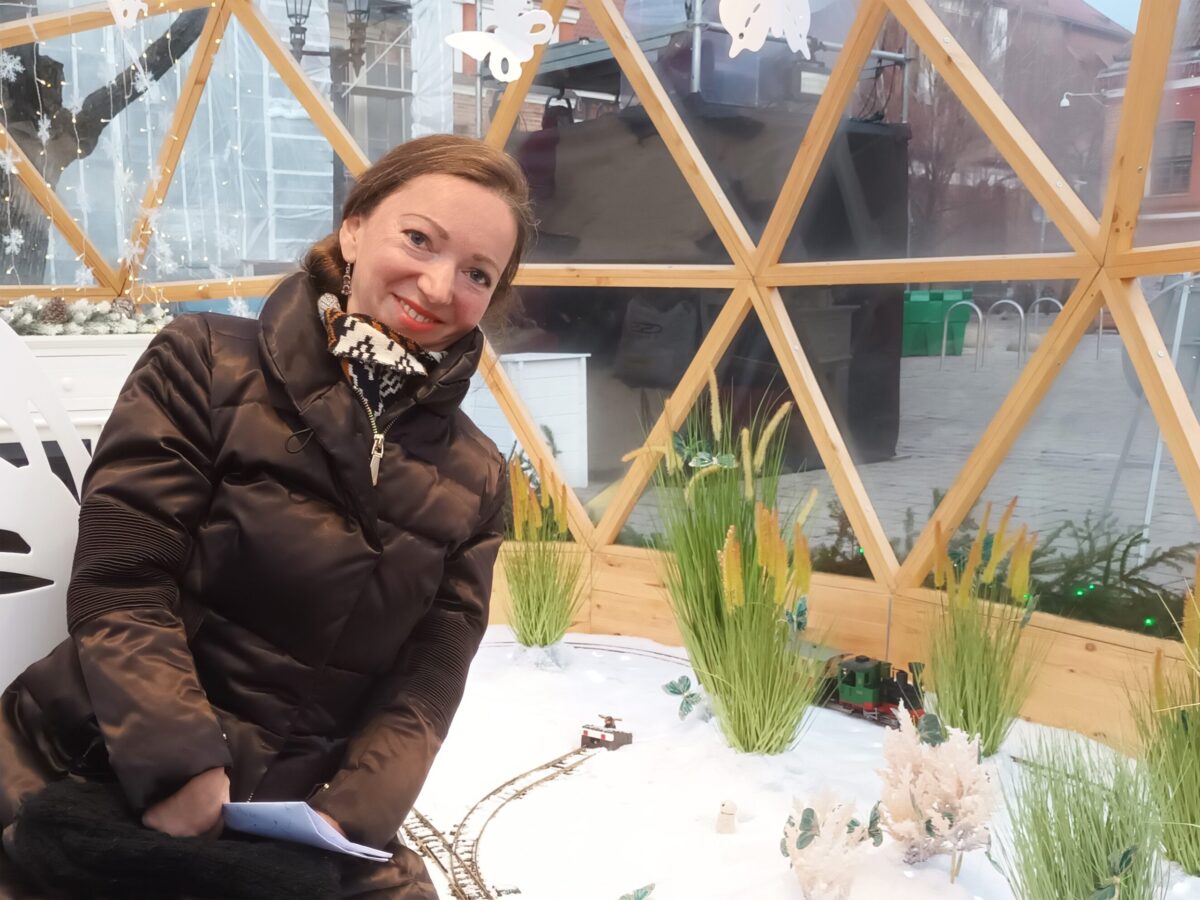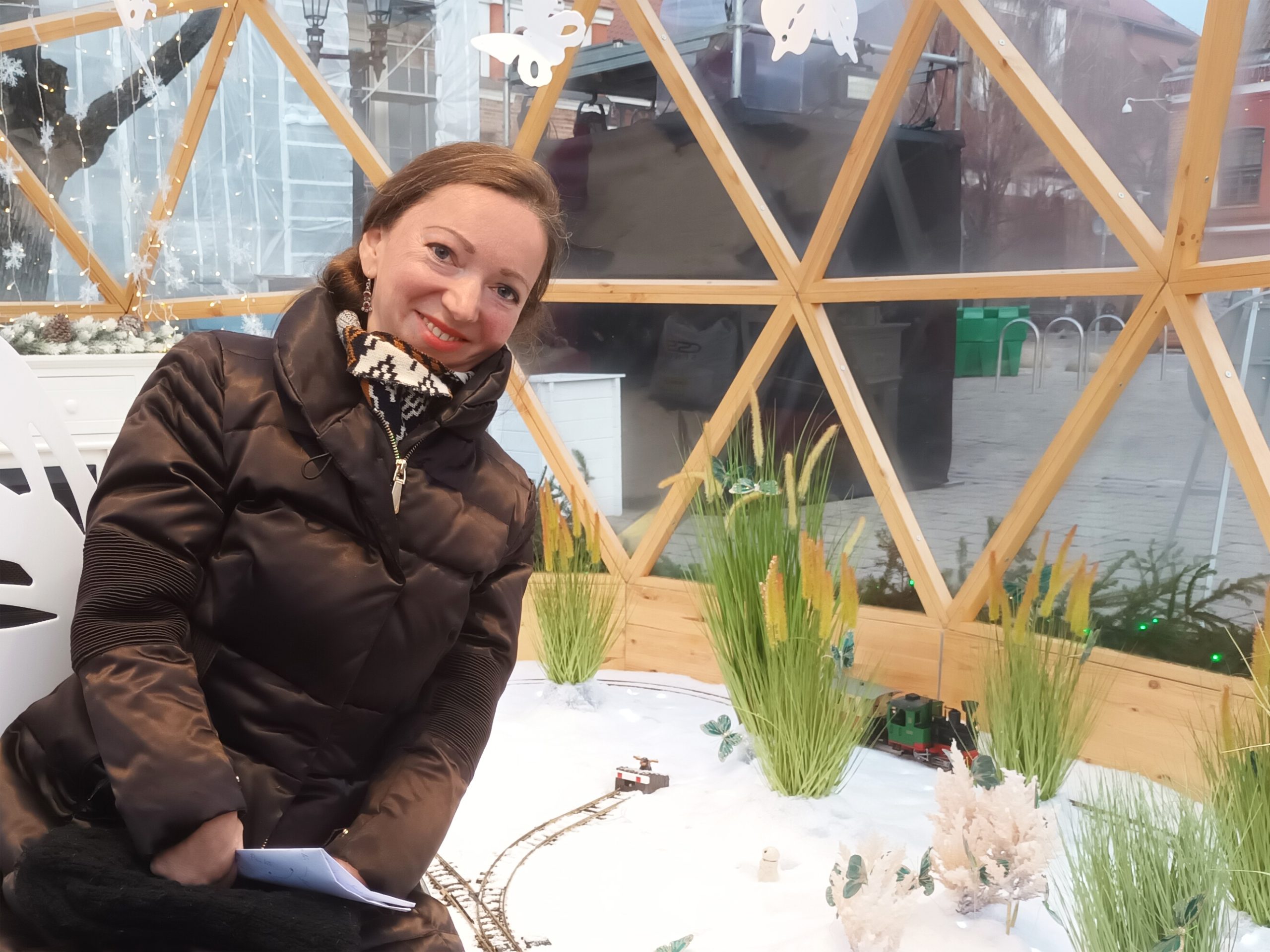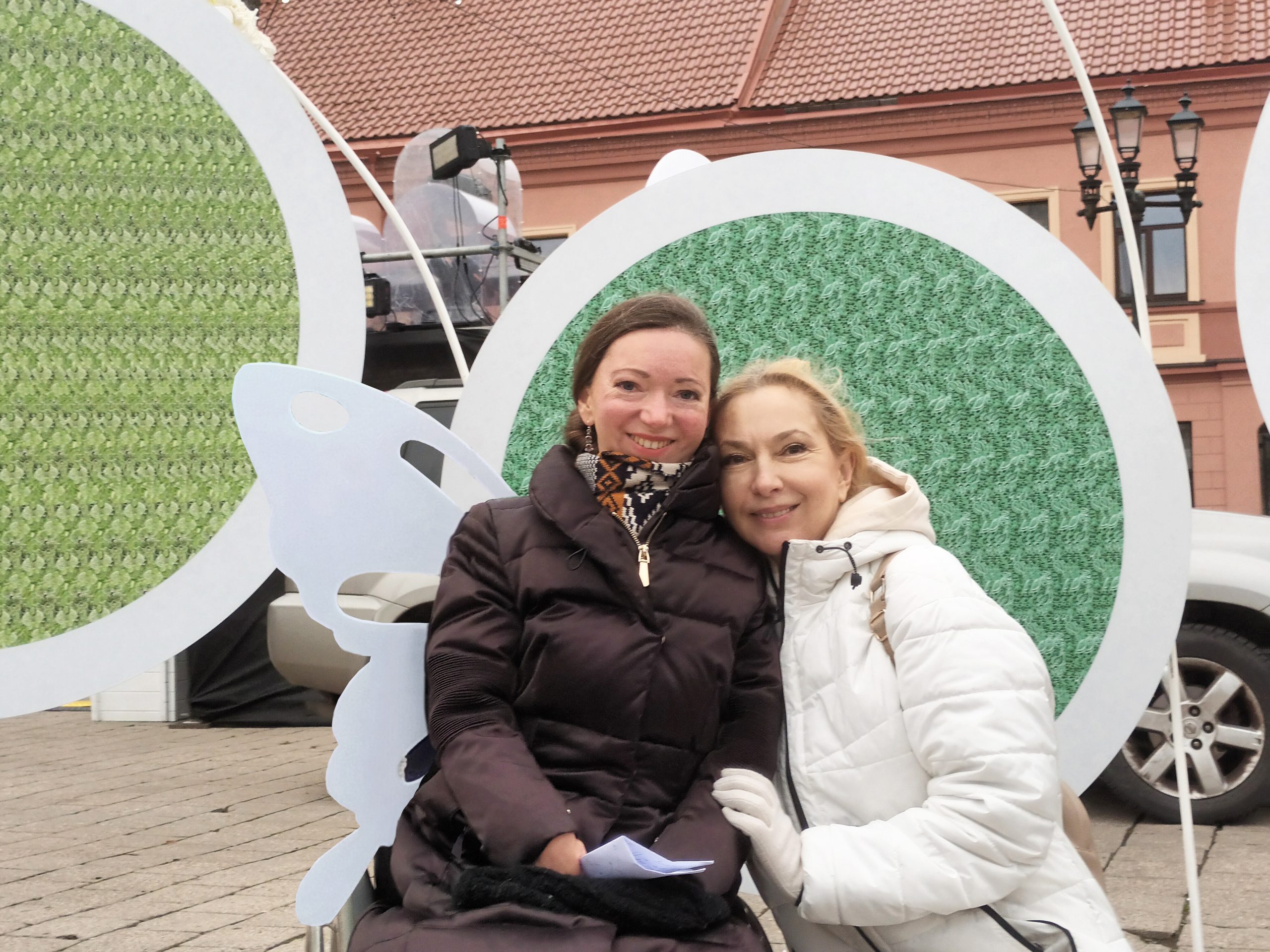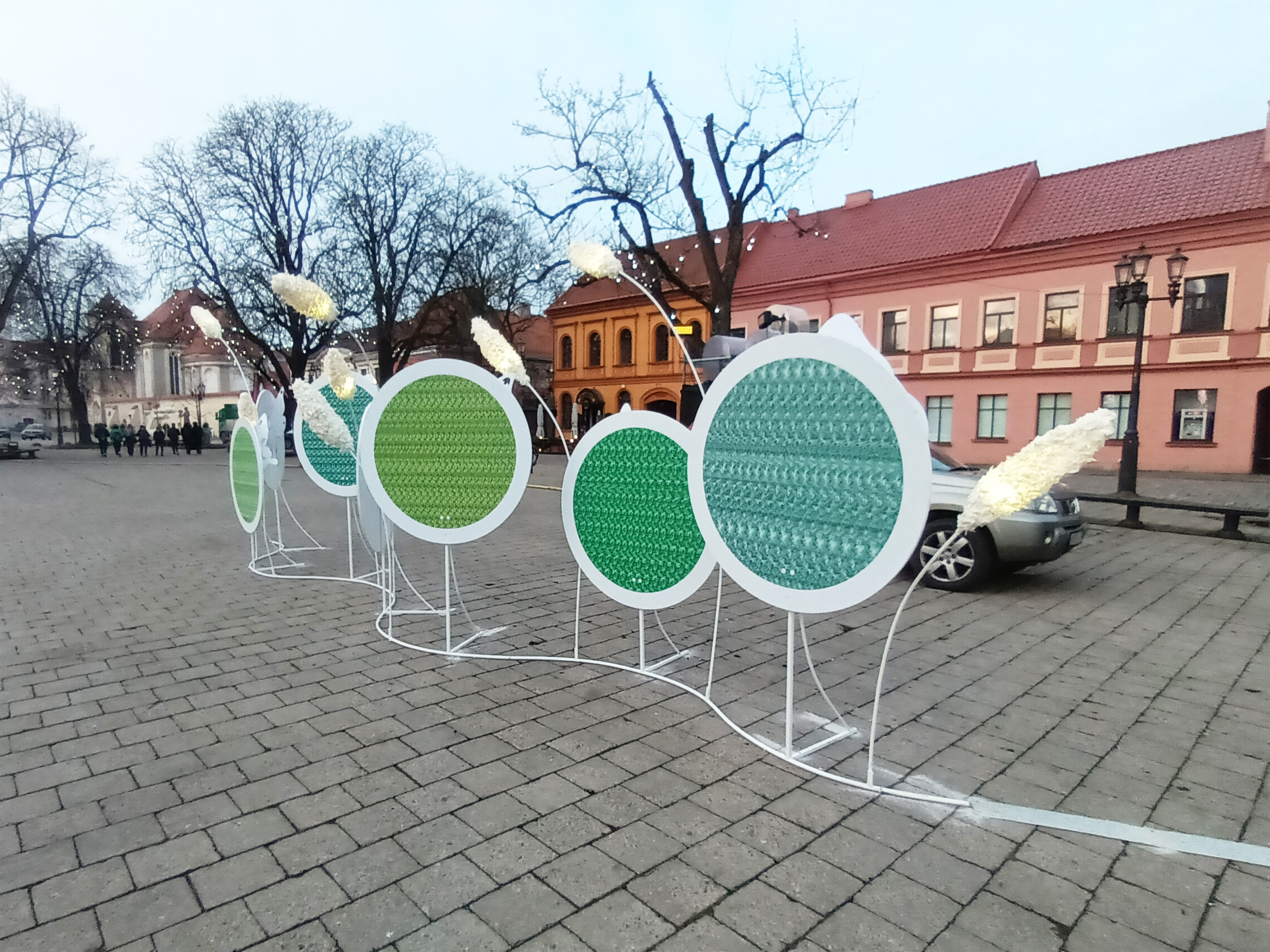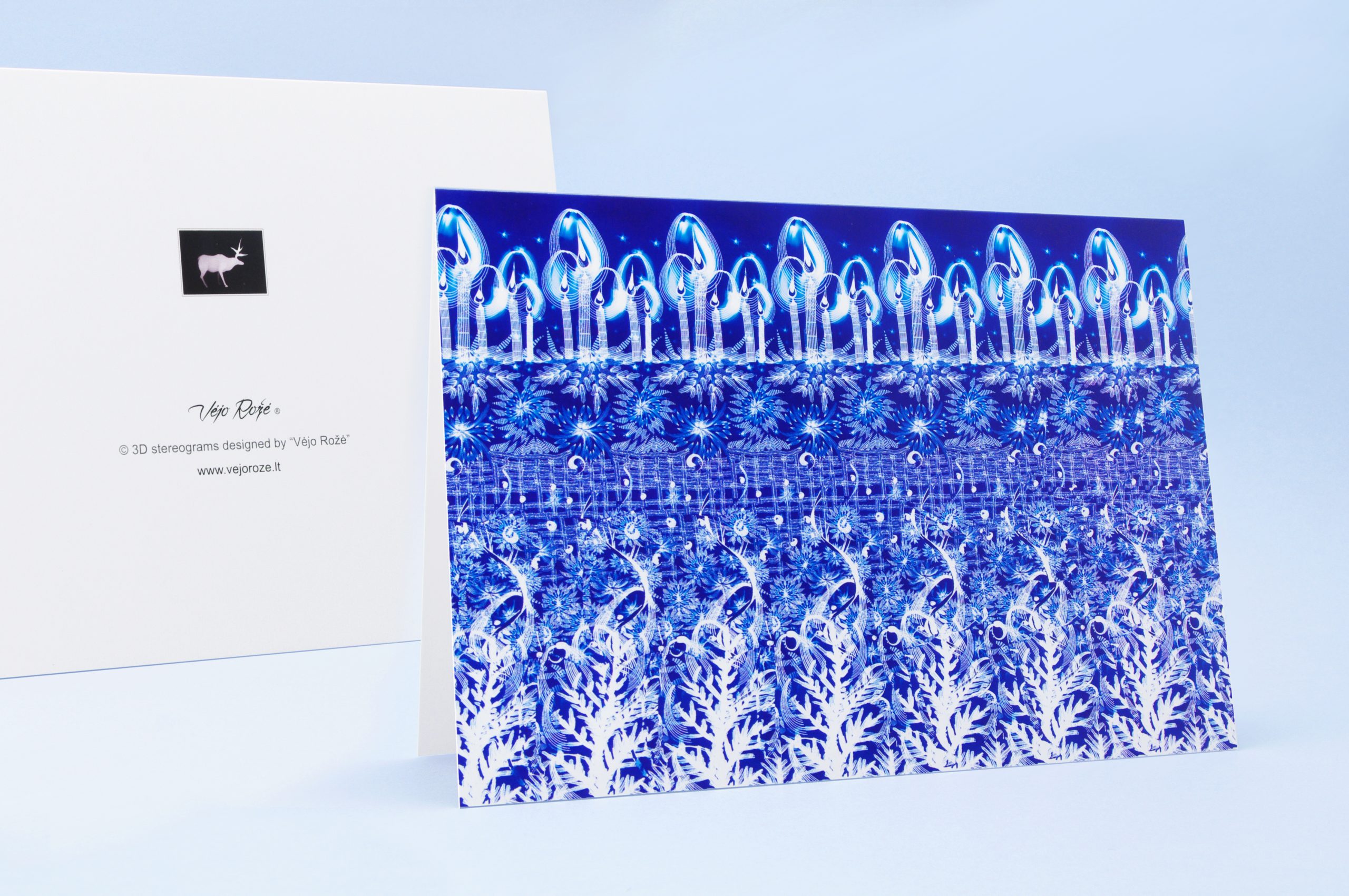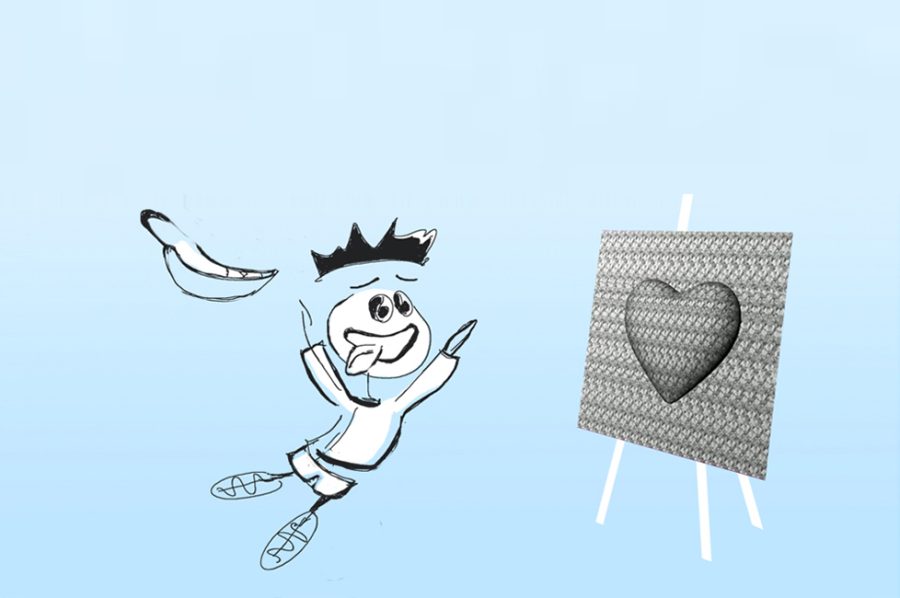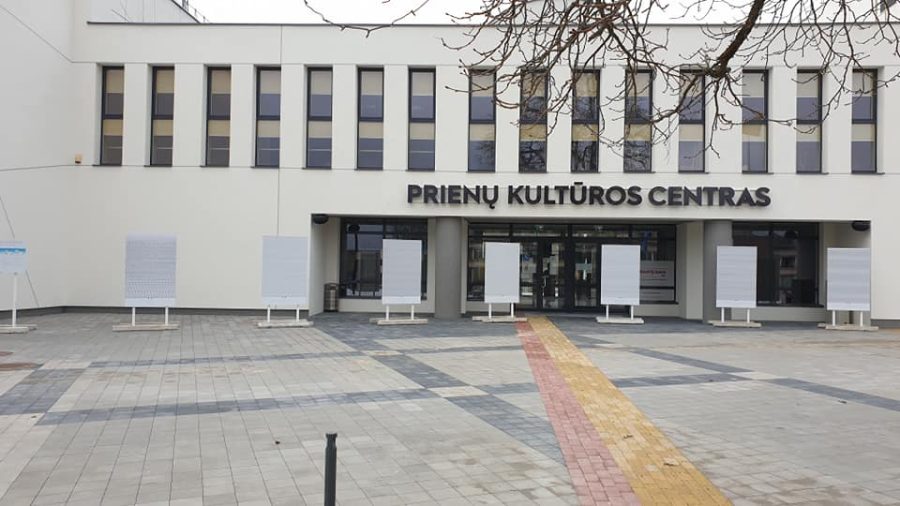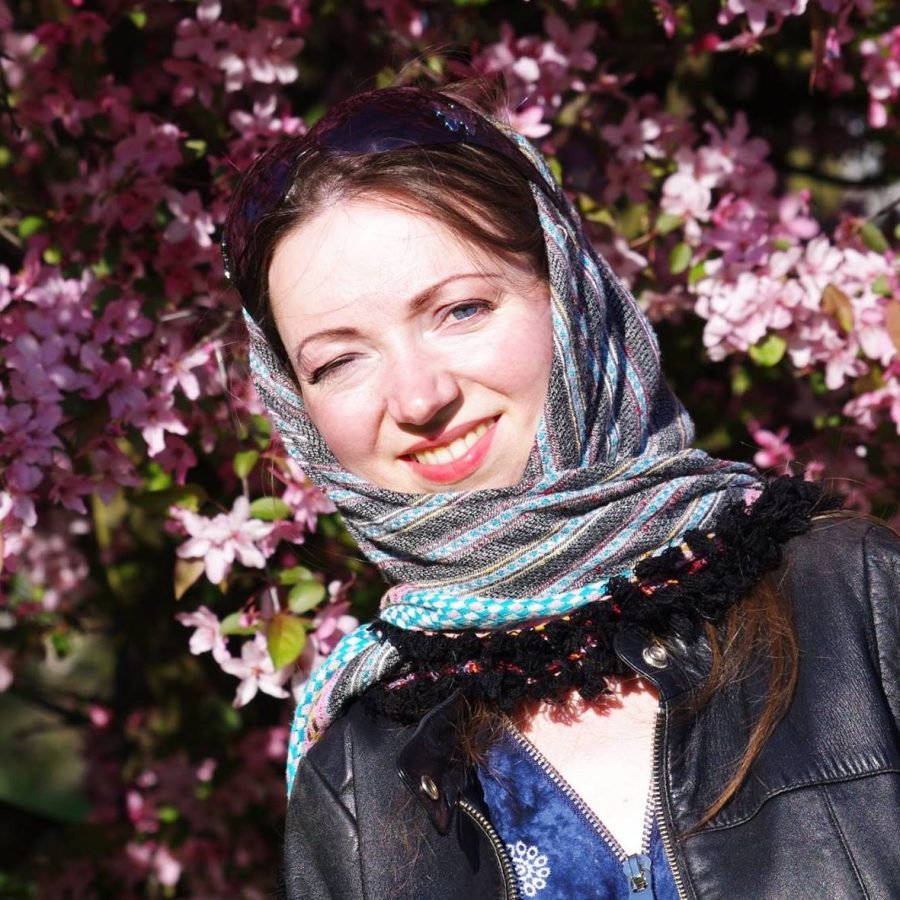“A stereogram is a picture with a pattern similar to wallpaper. It is a two-dimensional image in which a three-dimensional object is hidden. These can be simple objects such as a heart, a star, and the like. And the larger format pictures hide detailed animals, plants and human portraits. In order to see an emerging object, one looks from afar. It’s really easy, the main thing is to take your time. Both children and elderly people can see it. When a person smiles, it means that he has really seen a hidden object,” says graphic designer and stereogram creator LORETA ROŽEVIČIŪTĖ-ELKSNĖ.
Loreta is the author of projects decorating Kaunas Town Hall with stereograms. Participating in the projects of Christmas tree decorator Jolanta Šmidtienė, together with her creative group “Vėjo Rožė”, she presented exhibitions of three-dimensional pictures “True things are not seen by the eyes” based on the work “The Little Prince” and the 3D exhibition “The Garden of Paradise” held this year.
The reader would probably be interested to know how stereograms strengthen the eyes, what is this based on? There is a lot to talk about (smiles). It is based on the training of the eye muscles, when we change our gaze from close to far. Like looking at the horizon. We simplistically call it a faraway look. Indoors, we constantly look at objects that are close, due to such eye focus, the eye muscles are constantly overstretched, not to mention phones or monitors. When we look at the stereogram from a distance, the directions of vision of the eyes become almost parallel, which resembles the position of the eyes during sleep, so they rest.
In order to strengthen your eyes for prevention, you should look out of the window into the distance for a few minutes three times a day. Or you can put the stereogram closer to the work table, the eyes will be unconsciously strengthened. It’s just that you shouldn’t multiply at first, because it can cause unpleasant sensations in the eyes, which shows that the eyes are really “working”. And by looking at the picture from a greater distance, you can quickly get used to seeing the 3D image in an instant.
How did you discover stereograms? About 25 years ago, an exhibition of stereograms was brought to Kaunas from abroad. Unfortunately, I did not see the raised pictures at the exhibition because there was simply no explanation of how to see them. But there parents also bought 3D postcards. So, I had more time at home to try. I remember very well the moment when the motorcycle emerged from the postcard, I thought – wow! I sat frozen and was afraid to move lest the image disappear! (laughs) There was a very strong emotional impact, which became the main engine for a new hobby.
While still studying at the “Kauno dailės institutas”, I presented stereograms to the lecturers. And since 2004, I started working as a graphic designer and was always involved in the creation of three-dimensional pictures.
This is a rare activity. How did you learn to create stereograms? Yes, the world’s professional stereogram makers can be counted on the fingers of hands. So, when I started to get interested in them, no one wanted to share the secrets of creation. It was a huge challenge for me. The time of technical searches seemed to become an eternity. But the desire was greater (laughs). I sat at night watching the work of the pioneers of stereograms, so I had more than one inflammation of the eyes from overwork. Finally, one day I got the technical point! And this was just the beginning of the experiments. Well, that’s the way I am, if something seems impossible, I will definitely do it.
By the way, one of the pioneers, from whom I learned works, “liked” my exhibition. That person has no idea how important that “like” was to me.
How did the hobby become your main activity? Your family history is interesting. Tell us more about it. Oh… indeed, I am grateful to my grandmother and the unexpected event with her. Apparently, it was a Heavenly guidance that broadened my perspective in activities and made them meaningful.
My grandmother suffered from cataracts. She complained that there was a stain over her eye. She was almost 90 years old at the time. I gave her a few of my pictures, which she hung near the TV. This is how the old woman unconsciously trained her eyes. After a while, she began to tell her family that the eye spot had disappeared. I could not believe what happened! Although I had heard that stereograms strengthen the eyes. Inspired by this event, I realized that I had to say goodbye to my employers and set out to study the health benefits of stereograms in general. In the same 2016 I created the “Vėjo Rožė” creative group. Husband Vaidas also got actively involved in the activity. Now we do the printing ourselves. We work with professional sculptors and painters, but it takes the most time to bring up a three-dimensional image. I spend months laying out the pattern and staring at the picture from a distance.
You mentioned that your work has a clear direction, what is it? The direction of the works of “Vėjo rožė” is to draw by hand and thus move away from the pioneers who create patterns for stereograms on a computer. We work according to our own technological sequence, which is mainly handmade. Therefore, such pictures are born at least in a month. And the creation of large formats takes half a year. We also stand out in format sizes. For example, the pictures of the “Little Prince” exhibition are 1 m x 1.60 m, which are among the largest in the world of stereograms. Well, but I have other projects that will be even bigger in size, and I plan to transfer them to the walls of buildings as well. And for interiors, we create limited edition pictures with the highest quality, long-lasting museum print. Such pictures also have a certificate.
Do people react emotionally to stereograms? Oh, yes… after fairs or exhibitions we feel tired, but so charged by the feedback of people, full of joy and meaning in what we do. it makes us happy and encourages to strive for more and improve. We receive many personal messages with warm feedback. It is a pity, Lithuanians are modest, they share less about it in public. Others even try to hide their emotions so that others do not judge them. Foreigners show their emotions much more boldly.
We checked our exhibitions well when we attended them as visitors. People didn’t recognize us, they invited us and taught us how to see them (laughs). This is the kind of social project where strangers rush to help each other for them just to see. We have seen everything… Freer people clap their hands, others try to scratch the pictures in order to touch the raised drawing. And we get a lot of joy when they wait and see… I remember one elderly woman even cried after seeing a three-dimensional object. It got me so excited. This allows us to realize that all those years were not in vain. I devoted my life and a lot of my family’s finances to it. But I really enjoy what I do. And our goal is to make people happy, to distract them from the everyday, to stimulate the curiosity that we all had as children. And if you manage to do it, it’s a great feeling (smiles with closed eyes). The creative process for me is meditation, self-realization and, above all, there is nothing more wonderful when creation can bring so much joy to people and benefit the eyes.
Maybe you can take a peek at what creative ideas await? Lots of plans, probably not enough life to implement all the ideas (laughs).
We are now steadily working on a new exhibition of stereograms. New pictures are born: “The face I’ve been waiting for all my life” with a portrait of Jesus, “Vytis” with which we will strive for a large format.
I know that you have also started organizing events with stereograms. Wondering where they’re going? Yes… This is a long-term project. Planned even before the quarantine. We waited a long time before we could finally start.
Therefore, I really want to invite the readers of “Raktas” to the stereogram events that take place in the old town of Vilnius near St. Ona Church.
We invite you to travel with a guide through the historical experiences of stereograms and see an exhibition of large-format stereograms. Events are held in a cosy environment for small groups of people. Guests feel at home while drinking tea together. It is an invitation to spend a magical time.
Especially after the quarantine, I feel how much we need each other, that live communication. We plan to organize such events with guides in other cities as well.
Where can you be found? I invite you to visit our Facebook link “Vėjo Rožė”, where you will find more information about the event, exhibitions and the like. Also, if you are interested in a warm cooperation, write to me (smiles).
Alternatively, you can contact the organizer Eglė through the Facebook profile “Mykolo renginiai”, in this profile you will find pre-registration for events in Vilnius. It is also possible to purchase 3D postcards and pictures in the salon of “Mykolas”.
Source: magazine “Raktas” No. 05 (186) – May 2022, www.raktas.eu
